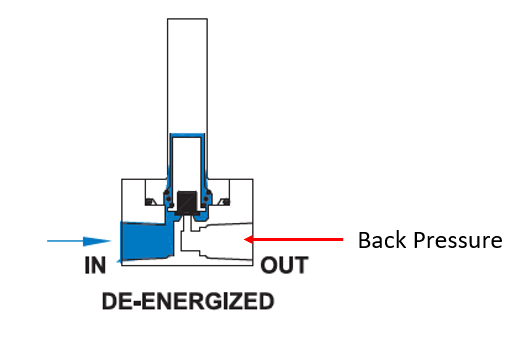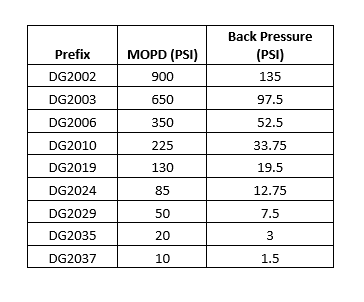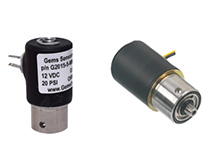When selecting and installing a two way normally closed solenoid valve, it is important to understand the amount of back pressure the valve can withstand. Typically, the inlet is over-seat, and the outlet is under-seat. The seat of the valve is the position where the plunger seal material will meet the valve body and make a liquid and airtight seal.
In 2-Way NC valves the inlet is over-seat, and the outlet is under-seat. In the image below, in the de-energized state the valve is closed, and the blue is indicating the fluid (liquid or gas). As it travels into the valve it enters the body and goes into the guide tube where it is over the plunger seal, hence over-seat.

Still
looking at the de-energized state, you notice the outlet is white since no
fluid can travel through with the valve closed.
It cannot because the plunger is down on the seat, on top of the outlet
passageway, which in turn means the outlet is under the seat, or under-seat. However, if there is any backpressure present
(pressure going opposite of the inlet direction) it may overcome the spring and
inlet pressure force and push the plunger up, which can lead to a problem in
your system.
The below chart gives the approximate amount of back pressure this valve can withstand. If you anticipate having back pressure within your system, it’s important to bench test the valve to fully understand the amount of back pressure it can withstand, but the below can be used as a reference.

Learn more about Gems Sensors Solenoid Valves HERE
 SEARCH OUR RESOURCE CENTER
SEARCH OUR RESOURCE CENTER

